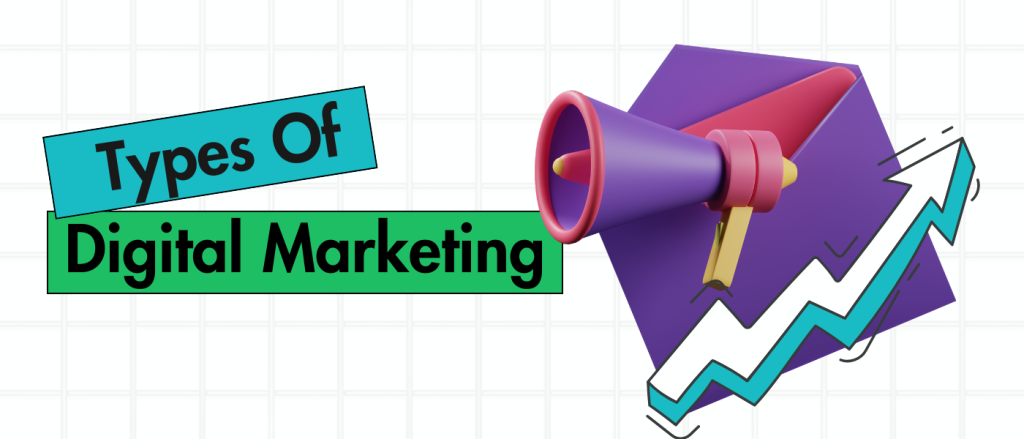What Is Social Media Marketing?
If you plan to hop the online audience, of course, targeted audience, social media marketing is an indispensable tool. Just using this tool, you can reach and engage with your target audience.
Social media platforms provide a huge opportunity for companies and businesses to interact, engage, and develop connections with their customers. At the same time, this marketing strategy is ideal for building brands or dragging traffic to the website.
But what exactly is social media marketing, and how can businesses leverage it to their advantage?
What Is Social Media Marketing?
Social media marketing refers to the process of using social media platforms to connect with your audience to build your brand, increase sales, and drive website traffic. This involves publishing great content on your social media profiles, listening to and engaging with your followers, analyzing your results, and running social media advertisements.
But what is the importance of social media marketing in the digital age?
In the digital age, social media has become an integral part of people’s lives. With over 4.2 billion social media users worldwide, platforms like Facebook, Instagram, Twitter, LinkedIn, and
YouTube offer unparalleled opportunities for businesses to connect with their target audience. Social media marketing allows businesses to reach a global audience, build brand awareness, and drive sales like never before.
Understanding Social Media Platforms
To effectively leverage social media marketing, it’s essential to understand the different platforms available and how they can be used to achieve your marketing goals.
Let’s have the overview of the most popular social media platforms.
With over 2.8 billion monthly active users, Facebook is the largest social media platform. It offers a diverse range of ad formats and targeting options, making it an excellent platform for businesses of all sizes.
Instagram boasts more than 1 billion monthly active users and is particularly popular among younger demographics. With its visually-focused content, Instagram is ideal for brands looking to showcase their products and engage with their audience through stunning visuals.
Twitter, with its 330 million monthly active users, is a platform known for its real-time updates and conversations. Brands can use Twitter to engage with their audience, provide customer service, and participate in trending topics.
LinkedIn is the go-to platform for professionals, making it an ideal platform for B2B marketing. With over 700 million members, businesses can use LinkedIn to establish thought leadership, build professional networks, and generate leads.
YouTube
As the second largest search engine after Google, YouTube has over 2 billion monthly active users. Brands can use YouTube to create engaging video content, reach a global audience, and drive traffic to their website.
Audience Demographics and User Behavior on Each Platform
Understanding the demographics and user behavior on each platform is crucial for creating effective social media marketing strategies.
- Facebook is widely used across all age groups, but particularly popular among users aged 25 to 34.
- Instagram platform is popular towards a younger audience, with the majority of users under the age of 35.
- Twitter is popular among users aged 18 to 49, with a strong presence among urban residents and college graduates.
- LinkedIn is used by professionals and business-oriented individuals, with the majority of users aged 25 to 49.
- YouTube has a broad user base, with almost 75% of adults in the United States using the platform.
Understanding these demographics and user behaviors will help tailor your content and strategies to each platform effectively.
Key Components of Social Media Marketing
To succeed in social media marketing, businesses need to understand and implement the key components of a successful strategy.
Content Creation and Curation
Content is at the heart of any social media marketing strategy. Creating high-quality, relevant, and engaging content is essential for attracting and retaining your audience’s attention. Content can come in various forms, including blog posts, videos, infographics, and more. It’s crucial to understand your audience’s preferences and tailor your content to meet their needs.
Audience Engagement Strategies
Engaging with your audience is key to building relationships and fostering brand loyalty. Responding to comments, messages, and mentions promptly shows that you value your customers and are committed to providing excellent customer service. Hosting contests, polls, and Q&A sessions are also effective ways to encourage engagement and interaction.
Community Building
Building a community around your brand is essential for long-term success on social media. By creating a sense of belonging and fostering meaningful connections, you can turn your audience into brand advocates who will help promote your business organically.
Influencer Marketing
Influencer marketing involves partnering with influential individuals on social media to promote your products or services. By leveraging the reach and influence of these individuals, you can increase brand awareness, reach a larger audience, and build credibility with your target market.
Paid Advertising on Social Media Platforms
While organic reach is essential, paid advertising on social media platforms can help amplify your message and reach a larger audience. With advanced targeting options and analytics, businesses can ensure that their ads are seen by the right people at the right time.
Benefits of Social Media Marketing
As of now we have got the concept on the basic social media marketing. But it is necessary to have the benefits before doing it for your own brand. Let’s open the box.
Increased Brand Awareness
Social media marketing allows businesses to reach a global audience and increase brand awareness like never before. By creating compelling content and engaging with their audience, businesses can build a strong online presence and make their brand more recognizable.
Enhanced Customer Engagement
Social media provides a direct line of communication between businesses and their customers. By actively engaging with their audience, businesses can provide better customer service, address concerns, and build stronger relationships with their customers.
Improved Customer Loyalty and Trust
By consistently providing value to their audience, businesses can build trust and loyalty with their customers. Social media allows businesses to showcase their expertise, share valuable content, and establish themselves as industry leaders.
Higher Website Traffic and Conversions
By sharing links to their website and blog content, businesses can drive traffic to their site and increase conversions. Social media marketing allows businesses to reach a larger audience and drive more qualified leads to their website.
Access to Valuable Data and Analytics
Social media platforms provide valuable insights and analytics that businesses can use to measure the success of their marketing efforts. By analyzing data such as engagement, reach, and conversion rates, businesses can optimize their strategies for better results.
Challenges of Social Media Marketing
While social media marketing offers many benefits, it also comes with its fair share of challenges.
Keeping Up with Algorithm Changes
Social media algorithms are constantly evolving, making it challenging for businesses to keep up with the latest trends and changes. Staying informed and adapting your strategy accordingly is essential for success in social media marketing.
Managing Negative Feedback and Crisis Communication
Negative feedback and crises are inevitable in social media marketing. Businesses need to be prepared to handle these situations promptly and effectively to protect their brand’s reputation.
Balancing Organic and Paid Strategies
Finding the right balance between organic and paid strategies can be challenging. While organic reach is essential for building relationships and fostering brand loyalty, paid advertising can help amplify your message and reach a larger audience.
Measuring ROI and Effectiveness
Measuring the return on investment (ROI) and effectiveness of social media marketing efforts can be difficult. Businesses need to establish clear goals and objectives and use the right metrics to track their progress and determine the success of their campaigns.
Best Practices for Social Media Marketing
The following s are the best practices for any business. But it is required to understand the business type before spending hours to find the right platform. Including the competitor research, there are many you have to consider.
This portion is highly recommended to read.
Establishing Clear Goals and Objectives
Before diving into social media marketing, it’s essential to establish clear goals and objectives. Whether it’s increasing brand awareness, driving website traffic, or generating leads, having a clear roadmap will help guide your strategy and measure your success.
Understanding Your Target Audience
Understanding your target audience is key to creating relevant and engaging content. By knowing your audience’s demographics, interests, and pain points, you can tailor your content to meet their needs and preferences effectively.
Consistent Brand Voice and Visual Identity
Consistency is key to building brand recognition and trust. Maintaining a consistent brand voice and visual identity across all social media platforms will help reinforce your brand’s message and make it more memorable to your audience.
Creating Compelling and Shareable Content
Creating compelling and shareable content is essential for driving engagement and expanding your reach. By providing value to your audience and creating content that resonates with them, you can encourage likes, shares, and comments, ultimately increasing your brand’s visibility and reach.
Monitoring and Analyzing Performance Metrics
Monitoring and analyzing performance metrics is crucial for optimizing your social media marketing efforts. By tracking key metrics such as engagement, reach, and conversion rates, you can identify what’s working and what’s not and make data-driven decisions to improve your strategy.
Future Trends and Opportunities in the Field
As social media continues to evolve, there are several trends and opportunities that businesses should be aware of:
- Video Content: Video content is becoming increasingly popular on social media, with platforms like TikTok and Instagram Reels leading the way. Businesses should focus on creating short, engaging videos to capture their audience’s attention and drive engagement.
- Ephemeral Content: Ephemeral content, such as Instagram Stories and Snapchat Snaps, is also gaining traction. Businesses should take advantage of this trend by creating temporary, time-sensitive content that creates a sense of urgency and FOMO (fear of missing out) among their audience.
- Social Commerce: Social commerce is another trend that businesses should pay attention to. With the rise of shoppable posts and in-app purchasing features, social media platforms are becoming increasingly important for driving sales and revenue.
By staying informed and adapting their strategies to take advantage of these trends and opportunities, businesses can continue to succeed in the ever-changing landscape of social media marketing.
This comprehensive guide provides an in-depth understanding of social media marketing, covering its definition, key components, benefits, challenges, best practices, and real-world examples. By following the strategies outlined in this guide and staying informed about future trends and opportunities, businesses can master the art of social media marketing and take their brand to new heights.
Case Studies and Examples
Successful Social Media Marketing Campaigns
- Nike’s “Dream Crazier” Campaign: Nike’s “Dream Crazier” campaign, featuring tennis superstar Serena Williams, was a powerful example of effective social media marketing. By tapping into the cultural conversation around gender equality and female empowerment, Nike was able to create a campaign that resonated with its audience and generated widespread engagement and conversation.
- Dove’s “Real Beauty” Campaign: Dove’s “Real Beauty” campaign is another excellent example of effective social media marketing. By challenging traditional beauty standards and promoting self-acceptance and body positivity, Dove was able to create a campaign that not only resonated with its audience but also drove meaningful social change.
Lessons Learned from Notable Brands
- Consistency is Key: One of the key lessons learned from notable brands is the importance of consistency. Maintaining a consistent brand voice and visual identity across all social media platforms is essential for building brand recognition and trust.
- Know Your Audience: Another important lesson is the importance of knowing your audience. By understanding your audience’s demographics, interests, and pain points, you can create content that resonates with them and drives engagement.
Conclusion
In conclusion, social media marketing is a powerful tool that businesses can use to reach and engage with their target audience. By understanding the key components, benefits, and best practices of social media marketing, businesses can create effective strategies that drive results and achieve their marketing goals.
While social media marketing comes with its fair share of challenges, the benefits far outweigh the risks. By following the best practices outlined in this guide and learning from successful case studies and examples, businesses can master the art of social media marketing and take their brand to new heights.







